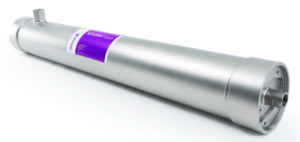Abstract
Biogas, mainly methane, from municipal and other organic wastes, can be converted into a usable transportation and industrial fuels and as technological feasibility establishes, into a variety of chemicals. However, the raw biogas needs to be cleaned up, the impurities removed, prior to such uses. This article outlines the role of membrane technology as a superior purifying process to obtain high purity methane.
Introduction
It is a widely acknowledged that climate change is a pressing issue, and it is already threatening weather conditions worldwide. Keeping it in check is a universal challenge, and countries worldwide are scrambling to do their bit to arrest global warming.
With its population of approximately 1.40 billion and burgeoning economy, India is a fast-growing global powerhouse. In a bid to contribute towards slowing down climate change, our Prime Minister has made several ambitious commitments at the recently concluded COP26 Climate Conference, the most noteworthy being the goal of achieving net-zero carbon emissions for India by 2070.
To help achieve this vision, he also declared that by 2030, 50% of the country’s energy requirements would be met through renewable energy, bringing down the estimated carbon emissions by 1 billion tonnes.
Of course, these targets can be met by transitioning from fossil fuels like coal and oil to cleaner-burning fuels such as biofuels, especially biogas. In fact, biogas makes more sense from India perspective because it is the proverbial one stone that kills two birds.
Biogas
With such a large population, India is faced with a growing problem of disposing of its organic waste. Farmers burn the chaff and agricultural waste in their fields which causes thick smog that smothers the cities in the north every winter. Copious quantities of Municipal Solid Waste (MSW) overwhelm treatment plants, and significant amounts of it enter untreated into our oceans and rivers, causing severe water pollution. Substantial quantities of other organic waste get dumped into landfills, where it decomposes and releases methane –a harmful greenhouse gas – into the atmosphere, which has been attributed to be a leading contributor to global warming.
Biogas is produced through the anaerobic decomposition of organic waste. Feedstock for its production can consist of all and any organic waste, ranging from agricultural waste to Municipal Solid Waste (MSW). Thus, biogas can help solve the issue of organic waste disposal while simultaneously harnessing it as a biofuel that otherwise would have been wasted and released into the atmosphere. Harnessing biogas aligns perfectly with the other goal set by our Prime Minister at COP26, which is of reducing India’s greenhouse gas emissions by 1 billion MT by 2030.
Methods to Upgrade Raw Biogas

However, this raw biogas contains impurities like moisture, carbon dioxide, and other trace gases in addition to methane, which reduces its calorific value. To enhance efficiency and convert biogas into an adequate transportation and industrial fuel, the contaminants are removed through biogas upgradation to obtain methane-rich gas called Biomethane or Compressed Biogas (CBG).
Today, many methods exist to purify raw biogas into biomethane. Of the lot, Water Scrubbing, Amine Scrubbing, and Pressure Swing Adsorption are the most popular because of the perceived lower operational costs associated with them. However, these methods all utilize water and other substances, which cause the creation of effluents that need to be disposed of responsibly and safely. All of these factors also substantially add to the overall costs. Because of the production of hazardous by-products through their operation, these are far from being eco-friendly in the truest sense.
Membrane Technology

Although several manufacturers are currently working on creating new, more efficient, and greener methods of biogas upgradation, membrane technology has been the one that has gained the most prominence of the lot. This is because membrane purification systems, with their inherent high CO2/CH4 selectivity, provide methane with a purity of more than 90% (which can go up to 99%) from the raw biogas.
The permeation rate of every gas depends on its solubility within the membrane material and the diffusion rate. Gases with higher solubility and smaller molecular size permeate the membrane faster than larger, less soluble gases. The ratio of the transport speeds of two gases is termed selectivity—the greater the selectivity, the greater the energy efficiency of the resulting membrane process. Different membrane materials have different separation properties.
How it Works
Membrane-based technology for biogas upgradation is an advanced and innovative alternative to traditional technologies. Biogas is produced by fermenting biomass- an organic substance from waste such as liquid manure and sewage sludge or renewable raw materials. Different gas molecules are of various sizes and have different solubilities in polymers. The biogas to be cleaned is introduced under high-pressure at one end of the membrane. As the CO2 molecules are smaller than the methane molecules and more soluble in the polymers, the CO2 molecules pass through the membrane’s micropores much faster and are separated from the methane. CO2, vapor, and traces of ammonia and sulfide are drawn off at the low-pressure side while the methane collects at the opposite end of the membrane. The driving force required for the separation is obtained through a partial pressure gradient. During this case, the permeate gas, methane, will be recirculated through 2 or 3 stages to get methane purity of up to 99%. In the past few years, the membrane technology manufacturers have created innovations to improve the quality, selectivity, and overall methane concentration recovery, resulting in improved system performance anda better cost of ownership for the investors.
*There are many advancements taken place in membrane technology such as the hollow-fiber to efficiently upgrade biogas to high purity biomethane. Membrane cartridges consist of several thousand hollow fibers manufactured from high-performance polymers and wrapped with a stainless-steel casing. The ends are embedded in a resin. The membrane cartridge is contained in a stainless-steel pressure vessel. The cartridge and housing together comprise the membrane module which can now withstand a gas mixture under pressure. Multiple modules can be piped together—the simple, easy-to-handle setup results in a compact upgrading plant. Green membranes and cartridge systems for upgrading biogas in various sizes are available to address plants of all sizes.
*The polymer-based hollow-fiber membranes are made from high-performance polymer polyamides. The properties of the membranes can be adjusted as early as in the development stage of the starting material, the high-performance plastic, to produce particularly selective and robust membranes that can withstand extreme pressures and temperatures.
Advantages of Membrane Technology
Membrane technology is also superior to other systems in use because it consumes less energy and has a modular containerized construction that allows for a more straightforward setup and lower overall costs of operation. Another significant benefit of membrane technology is that the methane produced can be directly injected into the gas grid. Furthermore, the upgradation of biogas using membrane technology does not require water or any other additives and thus, does not generate any effluents. Because of this crucial factor, this technology is green, and the resulting biomethane can qualify as sustainable in every sense.
Enables India’s Energy Transition
The government is keen to see India transition to a gas-rich economy, from 6.5% to 15% by 2030. To drive the adoption of gas as a fuel for India’s transportation sector, the Government of India has initiated the Sustainable Alternative Towards Affordable Transportation (SATAT) initiative, which is projected to create 75,000 direct jobs and lakhs of indirect ones in rural parts of the country.
Through such ingenious technologies like the membrane technology-based biomethane upgradation, India can meet its desired goals, which will make it a global doyen in its movement towards achieving its energy independence, along with leading from the front in the battle towards arresting climate change.
Editor’s Note:
*Evonik is a leader in introducing new membrane technologies for highly efficient biogas upgradation. Marketed under their brand SEPURAN®, membrane cartridges are made from high performance polymers, principally polyamides manufactured by Evonik inhouse, which ensures production of methane of purity as high as 99%.































